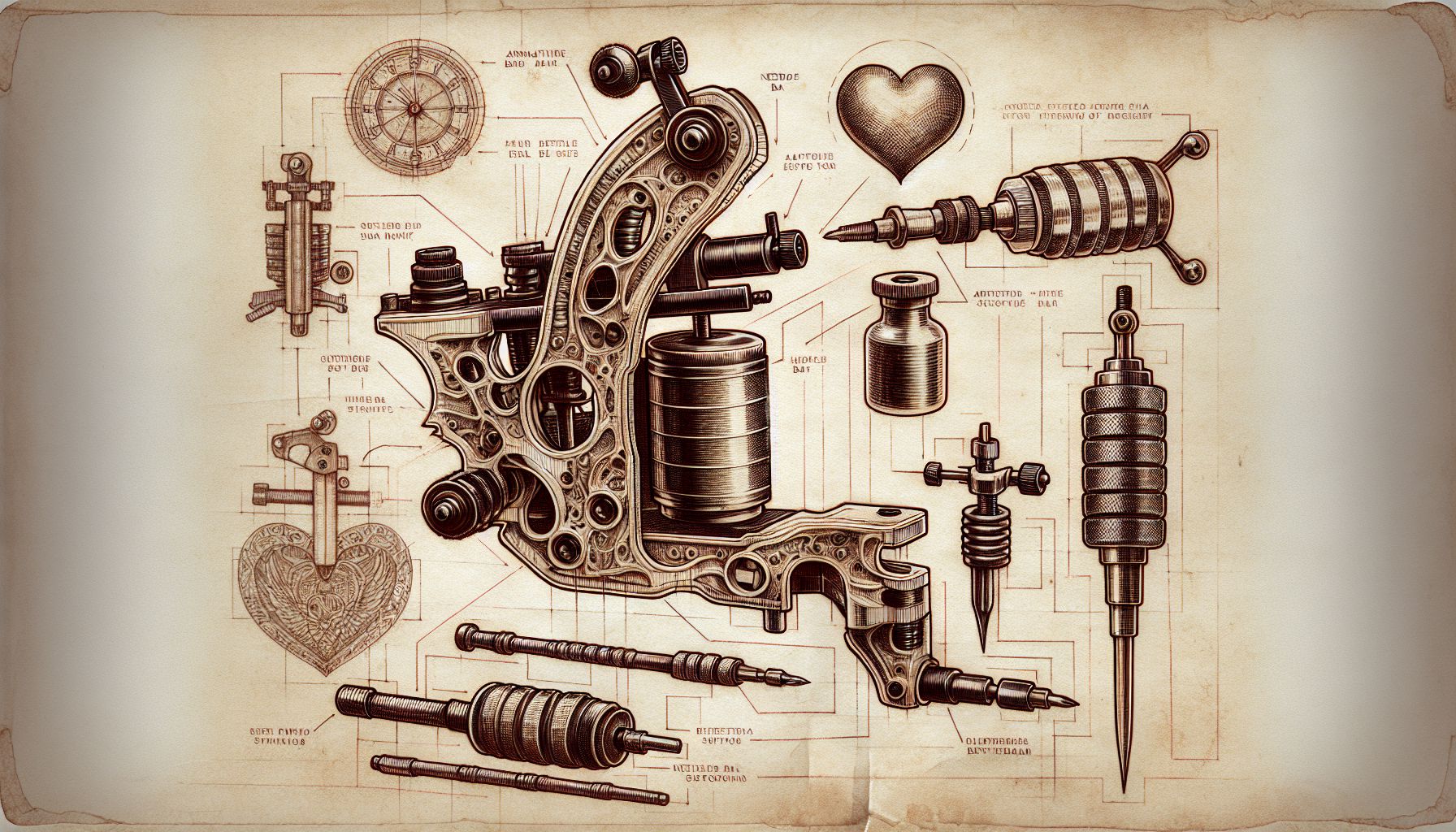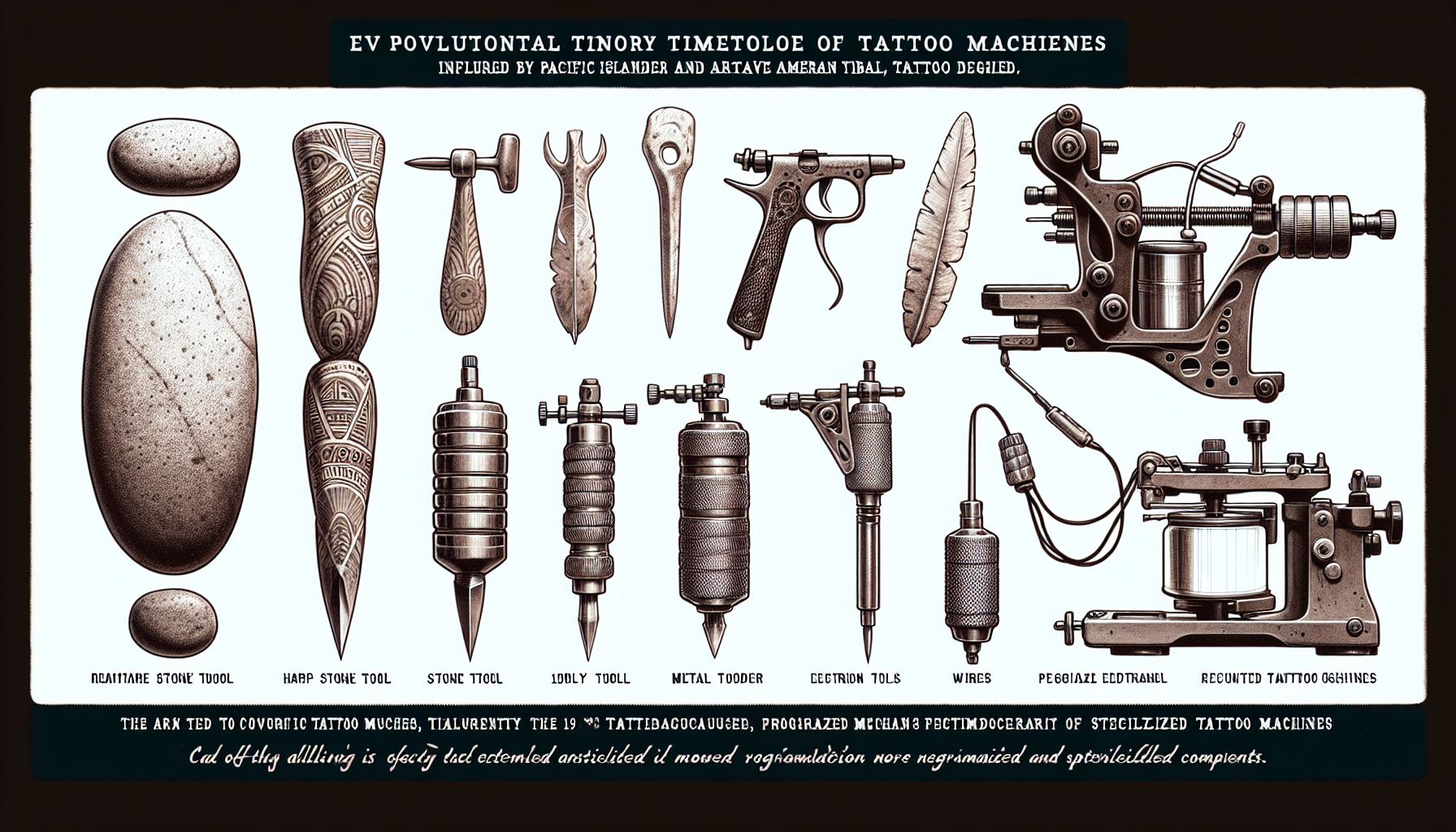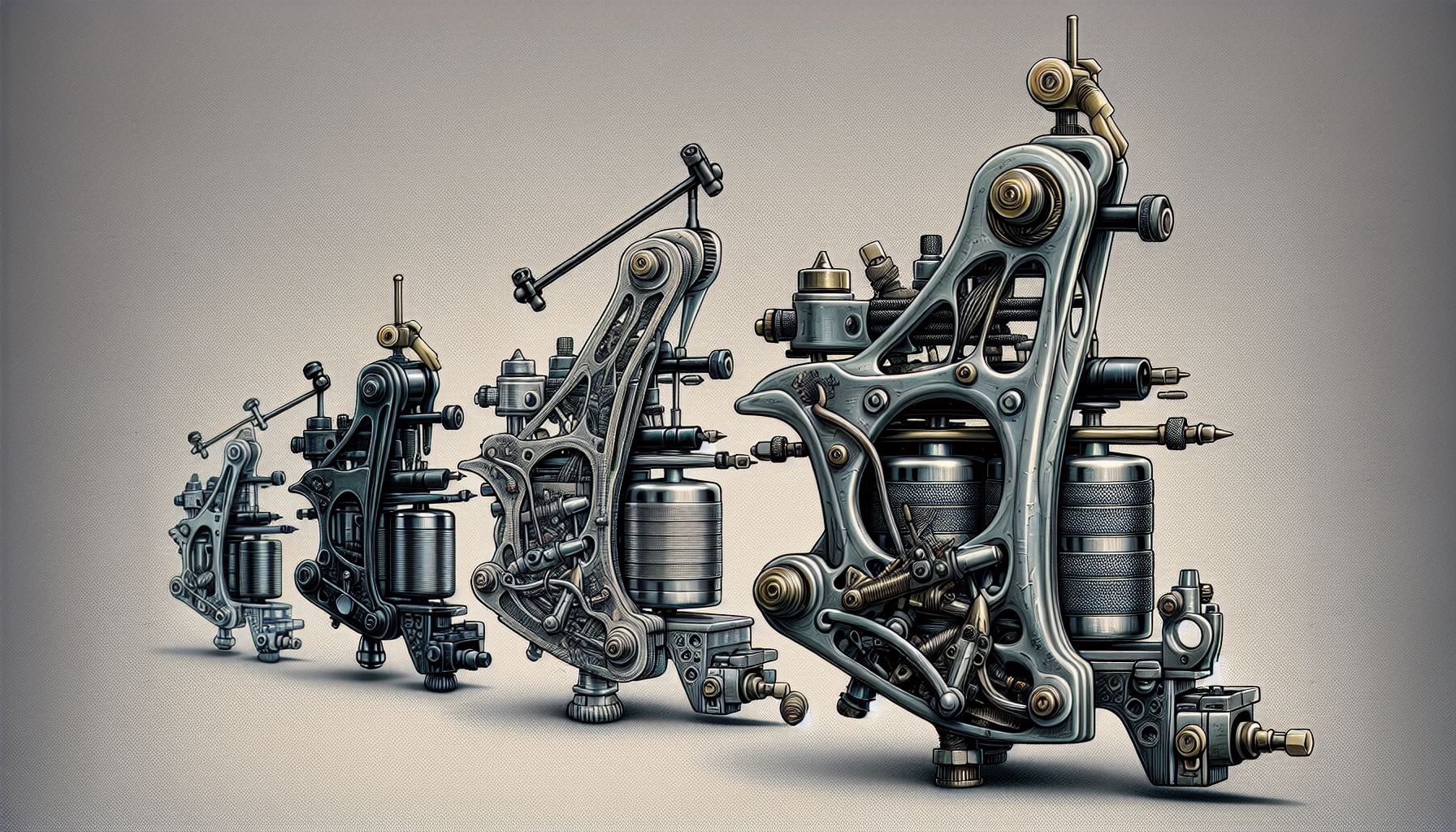When it comes to tattoo artistry, the tattoo machine is as sacred to an artist as the paintbrush was to Van Gogh. It’s an extension of the artist’s hand, a translator of creativity and skill onto the living canvas. As an online purveyor of tattoo supplies and a seasoned tattoo artist, I’ve witnessed the evolution of these pivotal devices firsthand. This dive into the intricate world of tattoo machines aims to shed light on their significance, mechanics, and nuances that could sway the decision-making of fellow artists and shops.
From the early Edison designs fashioned by Samuel O’Reilly to the sleek, sophisticated machines of today, tattoo machines have undergone a metamorphosis, both in design and function. With each passing year, new developments emerge, promising more power, control, and precision – the ultimate triad for any tattoo artist.
The Heartbeat of Tattoo Artistry
Tattoo machines are the heartbeat of our industry. They come in two main variants: coil and rotary. While both serve the same purpose – to push and pull the needle into the skin – their approaches are markedly different.
Coil machines, known for their distinctive buzz, operate on an electromagnetic circuit. When activated, the circuit pulls the machine’s armature bar down, driving the needle into the skin, then breaks the circuit, allowing the bar to spring back up. This rapid on-and-off motion drives the needles in a linear fashion, creating the punctures needed to embed ink under the skin.
Rotary machines utilize a small motor that rotates in a circular motion. This rotation drives the needle up and down in a smoother, more fluid manner compared to the mechanical thudding of coil machines. Rotary machines have become quite popular due to their quiet operation, consistent power, and less vibration, offering a higher level of control and comfort for long tattoo sessions.
Precision and Power: A Balancing Act
Selecting the right tattoo machine comes down to a balance of precision and power. A heavy machine may offer raw power, but too much weight can become burdensome, leading to fatigue and affecting the artist’s precision. Modern tattoo machines have become increasingly lightweight, with materials like aluminum and carbon fiber reducing the strain on artists’ hands.
Adaptability and ease of maintenance are also considerations to make. Machines that allow for quick changes of needles or configurations without extensive disassembly can be a true boon, especially for artists who work in various styles or need to switch between lining and shading during a session.
Anecdotes From the Chair
I recall a moment early in my career when I faced a dilemma. A seasoned artist had advised me to stick to the traditional coil machine for its unbeatable power to drive ink into the skin – the hallmark of bold, solid tattoos. The first machine I purchased was a hefty coil monster that served me well in laying down thick lines and dense color fills.
However, with time, I started working on more intricate, detail-oriented pieces where shading and gradation became crucial. I decided to experiment with a rotary machine and, to my surprise, found the transition to be transformational. The consistent flow and quieter operation allowed me to focus more intently on the subtleties of shading without the intimidating buzz overshadowing my thoughts.
The Evolution of Tattoo Machines
Over the years, I’ve seen manufacturers push the envelope on what tattoo machines can do. Some have introduced machines with customizable “give,” allowing artists to adjust the machine to their liking, offering a softer or harder hit. This customizability assists in accommodating various skin types and artist preferences.
Digital displays and interfaces that show voltage and other settings are now standard in some of the high-end models. These technological advancements help artists maintain consistent speed and power, crucial for quality and safety.
Choosing Your Conduit
When selecting a tattoo machine, knowing oneself as an artist is key. Are you heavy-handed or light with your strokes? Do you specialize in a particular style or are you a versatile artist tackling all types of tattoos? Innovations have led to options that cater to nearly every artistic approach. Modular machines designed with interchangeable parts expand an artist’s range, allowing for easy switches between lining, shading, and packing configurations.
Ethical and Health Considerations
In my years dealing in tattoo supplies, I’ve grown increasingly conscious of the ethical and health implications of our tools. Manufacturers are responding to artists’ demands for equipment that not only performs well but is also ethically produced and safe for both artist and client. This has led to more companies offering vegan-friendly inks and disposables, and autoclave-safe machines for improved sterilization practices.
The Core of Your Tattoo Kit
The selection of a tattoo machine is a personal journey, one that every artist takes with a mix of anticipation, excitement, and reverence. When you’re investing in a new addition to your tattoo supplies, remember this isn’t just a purchase, it’s finding a new partner in your artistic journey.
To close, I’ll leave you with a piece of advice I was given by that seasoned artist many years ago: “Choose your machine like it’s the only one you’ll ever use.” This mindset encourages the importance of research and making a well-informed choice, because, while you may own several machines over your career, each one should be chosen with the intent that it could be your last – your perfect ally in artistry.
Whether you’re new to the industry or an experienced artist, a quality tattoo machine is always a wise investment. By understanding the nuances and capabilities of these core tools, you’re not just buying equipment – you’re enriching your craft with every line, shade, and fill.



